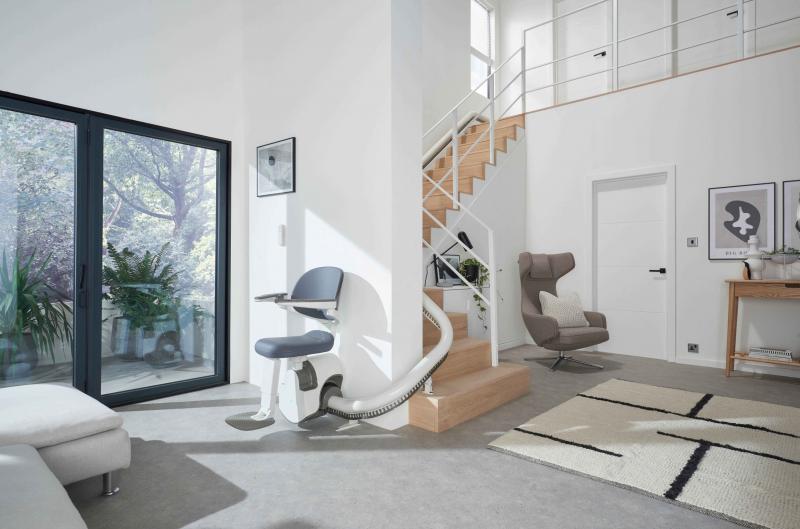The Rise of Accessibility Equipment for Aging Populations
As more countries experience increases in life expectancy, populations are getting older overall. According to United Nations data, the percentage of people aged 65 and above is projected to rise from 8% to 16% between 2015 and 2050 globally. With aging comes various health challenges and mobility issues. Stairlifts have emerged as an important tool to help seniors and people with limited mobility safely navigate between floors in their homes.
What are Stairlifts?
A stairlift is a mechanical device for lifting people up and down stairs. Stairlifts are intended for those who have difficulty with steps due to conditions like arthritis, hip or knee replacements, heart problems or reduced mobility. Stairlifts have seats that glide back and forth on a track, which is securely anchored to the stairs. The track runs either straight up the stairs or it can be curved depending on the design of the stairs. Users simply sit down on a comfortably padded seat that is held in place by a safety belt or harness. An electric motor then powers the stairlift to smoothly carry riders up and down the stairway.
Popularity is Growing
According to industry reports, over 250,000 stairlifts are installed every year worldwide. In the United States alone, annual stairlift sales doubled between 2010 and 2017 to around 30,000 units. The growing popularity can be attributed to aging demographics combined with a greater willingness of seniors to invest in accessibility features that allow independent living for longer. Stairlifts have become much more mainstream than in prior decades. Their attractiveness also stems from being substantially less expensive than moving to a single-level home or paying for extensive renovations.
Various Models to Suit Different Needs
Not all homes and staircases are identical, so stairlift manufacturers offer different models depending on the specific requirements. Straight stairlifts work well on stairs that run up directly but curved stairlifts are needed when stairs change direction partway. Outdoor stairlifts are designed to withstand weather elements.light-duty stairlifts support up to 250 pounds while extra-heavy-duty options accommodate weights over 350 pounds. There are optional seat swivels, footrests and privacy canopies too. Battery-powered lifts function during power outages, while custom rail fittings can navigate unusually shaped stairwells. Each model combines comfort, safety and maneuverability for users.
Helping Seniors Maintain Independence
By enabling independent access between floors, stairlifts deliver considerable benefits beyond basic mobility. They help seniors comfortably perform essential daily tasks without relying on assistance from others. Stairlifts allow older adults to continue living autonomously in the homes they know and love rather than being forced into assisted living. This improves quality of life, self-reliance and overall well-being. Family members gain peace of mind from knowing their loved ones can safely get around on their own throughout the house. Even minor mobility issues like knee osteoarthritis that cause only intermittent discomfort no longer restrict independent living thanks to stairlifts.
Technology Advances Enhance Experience
Just as elevators have incorporated a range of comfort and convenience enhancements, modern stairlifts increasingly integrate creative technologies. Some lifts now offer USB ports for device charging, swivel seats, heated seats or footrests. Wireless remotes provide call/send functions from any floor. Obstruction sensors and soft-start/stop motions optimize safety. Automatic folding railings maintain attractive open floor plans when the stairlift is not in use. Many units connect to home security systems or mobile alert apps for fall detection and response. Artificial intelligence is advancing features like voice control, automatic obstacle recognition and destination selection via biometrics. Such innovations cater to user preferences while fulfilling accessibility objectives.
Growing Role in Healthy Aging
As populations worldwide continue expanding lifespans but struggle with limited healthcare budgets, preventative solutions will play a vital supporting role. Stairlifts prove highly cost-effective by keeping seniors mobile and self-reliant within their existing residences. This avoids costly assisted living or unnecessary hospitalizations from mobility-related falls and injuries. Going forward, stairlifts and equivalent accessibility technologies can help address the challenges of population aging worldwide. As always, proper installation and maintenance by certified professionals ensures ongoing safety and performance so these mobility aids reliably serve their crucial independence-enabling objective for years. Stairlifts certainly represent an important part of empowering healthy, fulfilling lifestyles even in later years.
